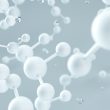Addiction is a complex and often misunderstood topic. It affects millions of people worldwide, wreaking havoc on their lives and causing untold suffering for both the individuals and their loved ones. But what exactly is addiction? Why do some people become addicted while others do not? And most importantly, how can we effectively treat it? These are just some of the questions that neuroscientists have been working to answer in recent years. In this blog post, we’ll explore the science behind addiction and discuss how neuroscience can help us understand and treat substance abuse more effectively than ever before. So sit back, relax, and let’s dive into the fascinating world of addiction neuroscience!
What is Addiction?
Addiction is a chronic and often relapsing brain disease that affects an individual’s ability to control their impulses. It’s characterized by compulsive drug use despite the harmful consequences it may cause, both physically and mentally. Addiction is not limited to illegal drugs; it also includes alcohol, prescription medications, and even certain behaviors such as gambling or gaming.
One of the defining features of addiction is its impact on the reward system in the brain. Drugs or other addictive substances flood the brain with dopamine, a neurotransmitter associated with pleasure and reward. Over time, this can lead to changes in brain function and structure that make it increasingly difficult for individuals to experience pleasure from everyday activities without using their substance of choice.
Addiction also has significant social implications beyond just affecting an individual’s health. It can damage relationships with loved ones, lead to financial strain, create legal trouble, and jeopardize career prospects.
Despite these negative consequences, those struggling with addiction often find themselves unable to quit on their own due to intense cravings or withdrawal symptoms when they try to stop using. This complexity makes treating addiction a challenging but critical endeavor for healthcare professionals committed to improving patient outcomes.
The Neuroscience of Addiction
The neuroscience of addiction is a complex and fascinating subject. It involves studying the structure and function of the brain to understand how it responds to addictive substances, such as drugs or alcohol, and why some people are more prone to addiction than others.
Research has shown that addiction affects different parts of the brain, including the reward center, prefrontal cortex, hippocampus, and amygdala. These areas are responsible for regulating emotions, decision-making, memory formation, and pleasure.
When someone uses an addictive substance repeatedly over time, changes occur in these areas of the brain. The reward center becomes desensitized to normal levels of pleasure and requires higher doses of dopamine (a neurotransmitter associated with pleasure) to experience satisfaction. This leads individuals to seek out larger quantities or stronger forms of their drug or drink.
The prefrontal cortex also experiences significant changes during addiction. This area is responsible for making decisions based on consequences – something that addicts often struggle with because they crave immediate gratification rather than thinking about long-term outcomes.
Furthermore, research has shown that genetics play a role in determining a person’s vulnerability to addiction: certain genes can make individuals more susceptible due to differences in how their brains process chemicals involved in reward pathways.
Understanding the neuroscience behind addiction is crucial for developing effective treatment plans. By targeting specific areas of the brain affected by addiction through therapies like cognitive-behavioral therapy (CBT), medication-assisted treatment (MAT), or neurofeedback training sessions; we can help individuals overcome this devastating condition and lead healthier lives free from substance abuse.
How to Treat Addiction with Neuroscientifc Methods
Treating addiction is no easy feat, but with the help of neuroscience, we can better understand how to approach it. The first step in treating addiction is acknowledging that it is a complex brain disorder that affects multiple regions and systems in the brain.
One neuroscientific approach to treating addiction involves cognitive-behavioral therapy (CBT). CBT helps individuals identify negative thought patterns and behaviors associated with substance abuse and replace them with positive ones. This type of therapy can be effective in helping patients manage cravings, avoid triggers, and develop coping mechanisms for stressful situations.
Another method of treatment is medication-assisted therapy (MAT), which uses medications like methadone or buprenorphine to reduce withdrawal symptoms while also addressing underlying neurological imbalances associated with addiction. MAT has been shown to improve retention rates in treatment programs as well as decrease relapse rates.
Neurofeedback training is another promising method for treating addiction by using real-time feedback from EEG recordings to help patients gain control over their brain activity. By learning how to regulate their own brain waves, patients may experience improved emotional regulation and decreased cravings.
These neuroscientific methods provide new insights into how we can effectively treat substance abuse disorders. While there’s still much research needed to fully understand the complexity of addiction, incorporating neuroscience into treatment plans offers hope for those struggling with this debilitating condition.
Case Studies of Successful Treatment Plans
One approach to treating addiction with neuroscientific methods is by tailoring treatment plans to the individual. This includes taking into account their specific history, triggers, and underlying mental health conditions.
For example, a study published in the Journal of Substance Abuse Treatment found that individuals with co-occurring depression and substance use disorders had better outcomes when receiving integrated treatment for both conditions rather than separate treatments.
Another successful case involved using cognitive-behavioral therapy (CBT) combined with mindfulness-based stress reduction (MBSR) to treat alcohol dependence in women. The study found that this combination led to significant reductions in drinking behavior and improved emotional regulation skills.
Additionally, medication-assisted therapies such as methadone or buprenorphine have been shown to be effective in reducing opioid cravings and withdrawal symptoms.
These case studies demonstrate the importance of individualized treatment plans for addiction and how incorporating various neuroscientific methods can lead to successful outcomes.
Conclusion
Addiction is a complex and devastating issue that affects millions of people worldwide. However, with the help of neuroscience, we can gain a better understanding of addiction and develop more effective treatment plans.
Through studying the brain’s reward system and the impact of drugs on neural pathways, we now know that addiction is not simply a lack of willpower or moral weakness. Addiction is a chronic disease that alters brain chemistry in ways that make it incredibly difficult to overcome without professional help.
Fortunately, there are several evidence-based treatments available for addiction, including cognitive-behavioral therapy (CBT), medication-assisted treatment (MAT), and contingency management (CM). By focusing on changing behavior patterns, reducing cravings, and addressing underlying mental health conditions like anxiety and depression – these treatment methods have been shown to be highly effective in helping people achieve long-term recovery.
By using an integrated approach that combines neuroscientific research with proven behavioral therapies tailored towards individual requirements- clinicians can provide holistic care to those struggling with addiction. With continued advancements in this field- We hope to see even more progress being made towards effectively treating individuals who suffer from substance abuse disorders.












